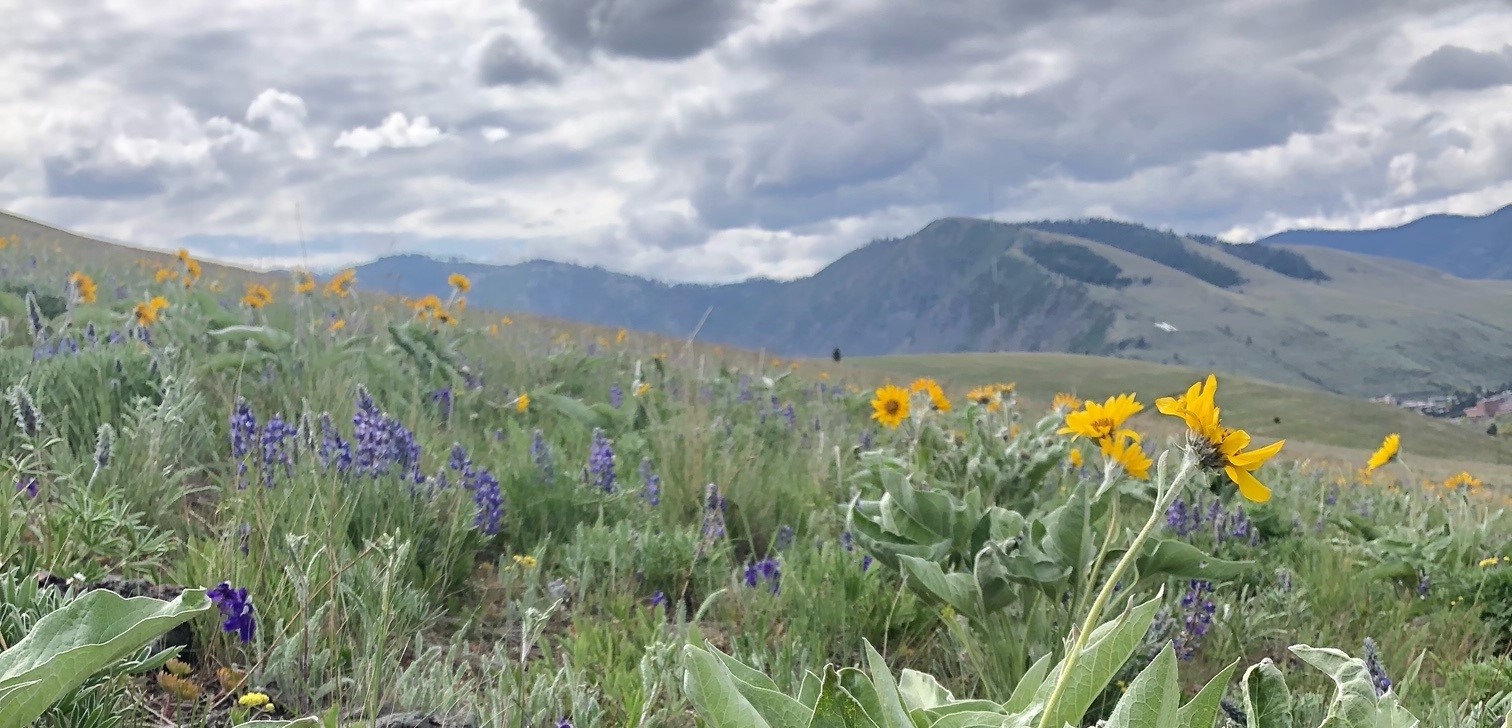Healthy Acres Spring Newsletter 2022
2022-05-04 10:55:20
View the full version here
Leave No Weeds, Two Decades of Conservation Education
For the past 21 years, the Missoula County Weed District has provided the Leave No Weeds program to area fifth-grade, elementary students as an opportunity to explore the importance of biodiversity and the role it plays in healthy plant communities.
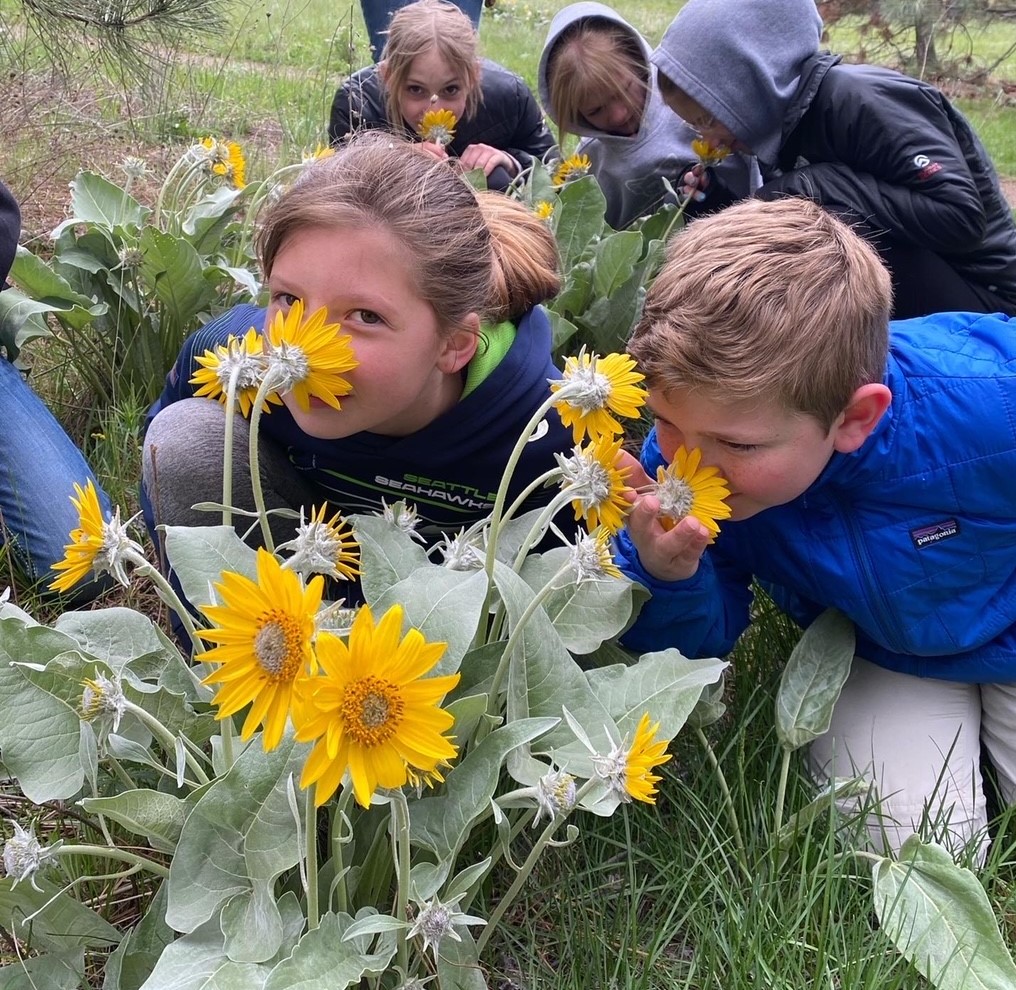
The program combines classroom instruction and outdoor field trip experiences. Students build on concepts like habitats, ecosystems, and biodiversity while expanding their knowledge by learning to define and label native, non-native, and invasive plants and their relevance and impacts on ecosystems.
The Leave No Weeds program encourages students to use personal experiences and ideas to help further their connections to how and why plant biodiversity benefits the choices they make and the other species that rely upon biodiversity for daily life needs. Through the program, participants recognize that everything from the food they eat, to the trails they hike, to the wildlife they love seeing is all interrelated because of plant biodiversity. The students soon realize that when non-native, invasive species become established, it can impact their lives as well as the lives of other living things that we share Montana with.
As Charlie Brown’s teacher used to say, ”Wah, wah, wah, wah, wah-wah,”: we’ve learned that the best way to teach kids about the benefits of healthy plant communities and biodiversity is to get them outside and stop talking at them! By moving, smelling, and examining native and invasive plants on the local landscape, kids learn to connect the classroom instruction to real places and draw conclusions of their own.
With their youthful, fifth-grade energy, students hike the trail system leading to the saddle of Mt. Jumbo. As they walk, they are learning to identify native flowers, grasses, shrubs, and trees. Traditional indigenous medicinal uses and culturally significant food sources are taught along with unique plant features and associated stories that will help them remember the plant names.
As a form of stewardship and giving back, the students also participate in a supervised “weed pull.” They compete to see who can get the longest spotted knapweed root, then examine the extracted roots, and seed heads looking for the larva of biocontrol agents. The exercise is finished by revegetating the disturbed ground with native grass and flower seeds donated by the city to hopefully outcompete the invasive in years to come.
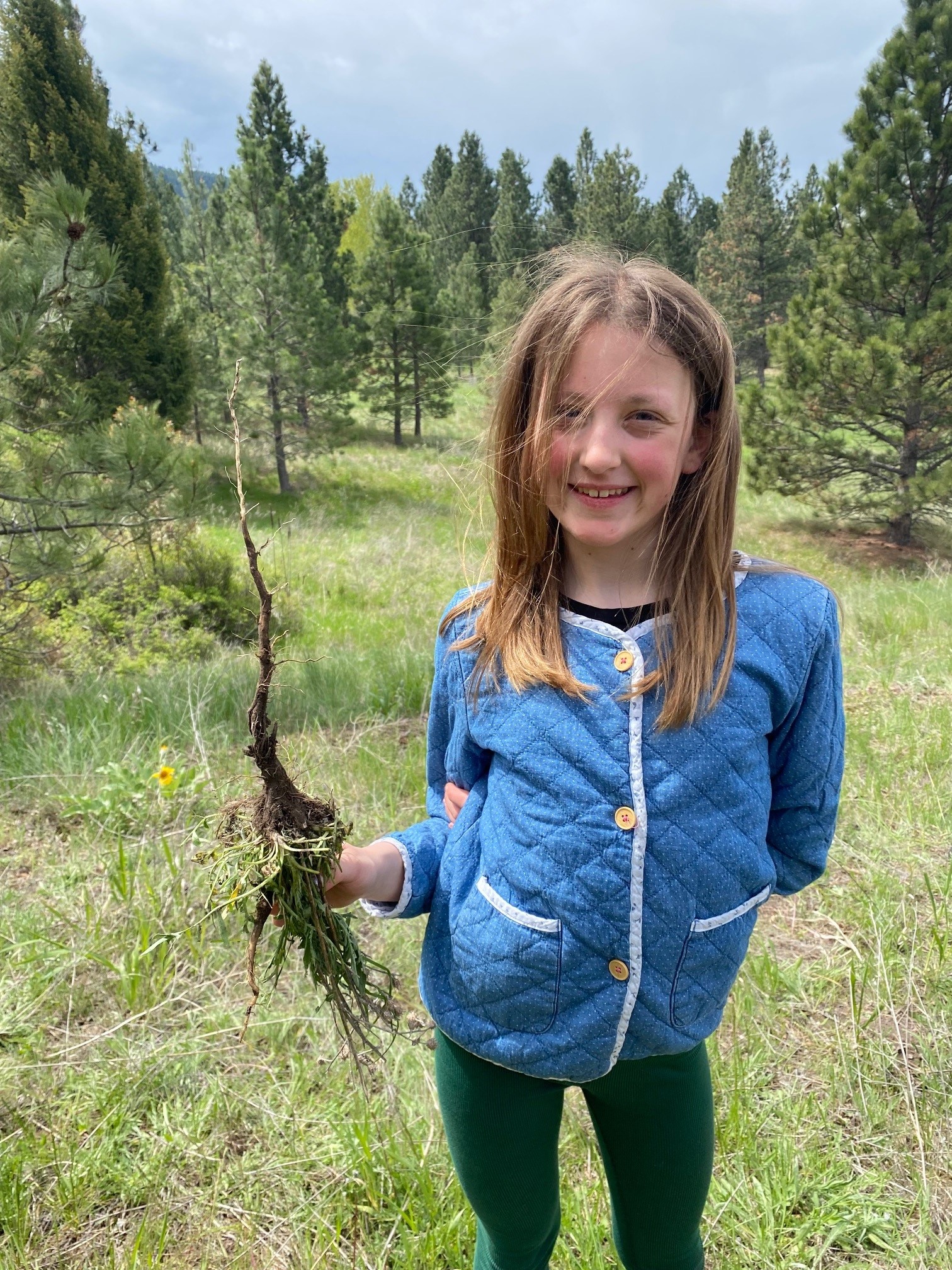
The success of the Leave No Weeds program is possible due to the generosity of partnering organizations and the sheer willpower of youthful, conservation-minded fifth graders and their dedicated teachers! We look forward to continuing this program and expanding conservation education at our future site—2.5-acre gardens at the Rocky Mountain Gardens and Exploration Center slated to be open next spring.
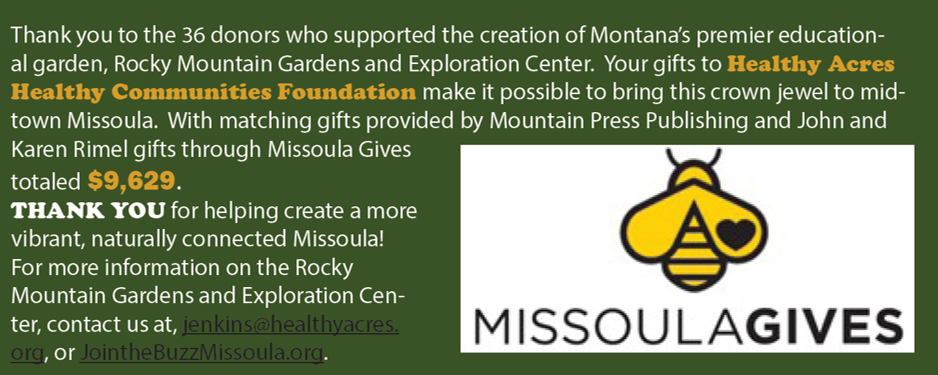
Fairgrounds Development Seeks to Create New Ag and Livestock Arena
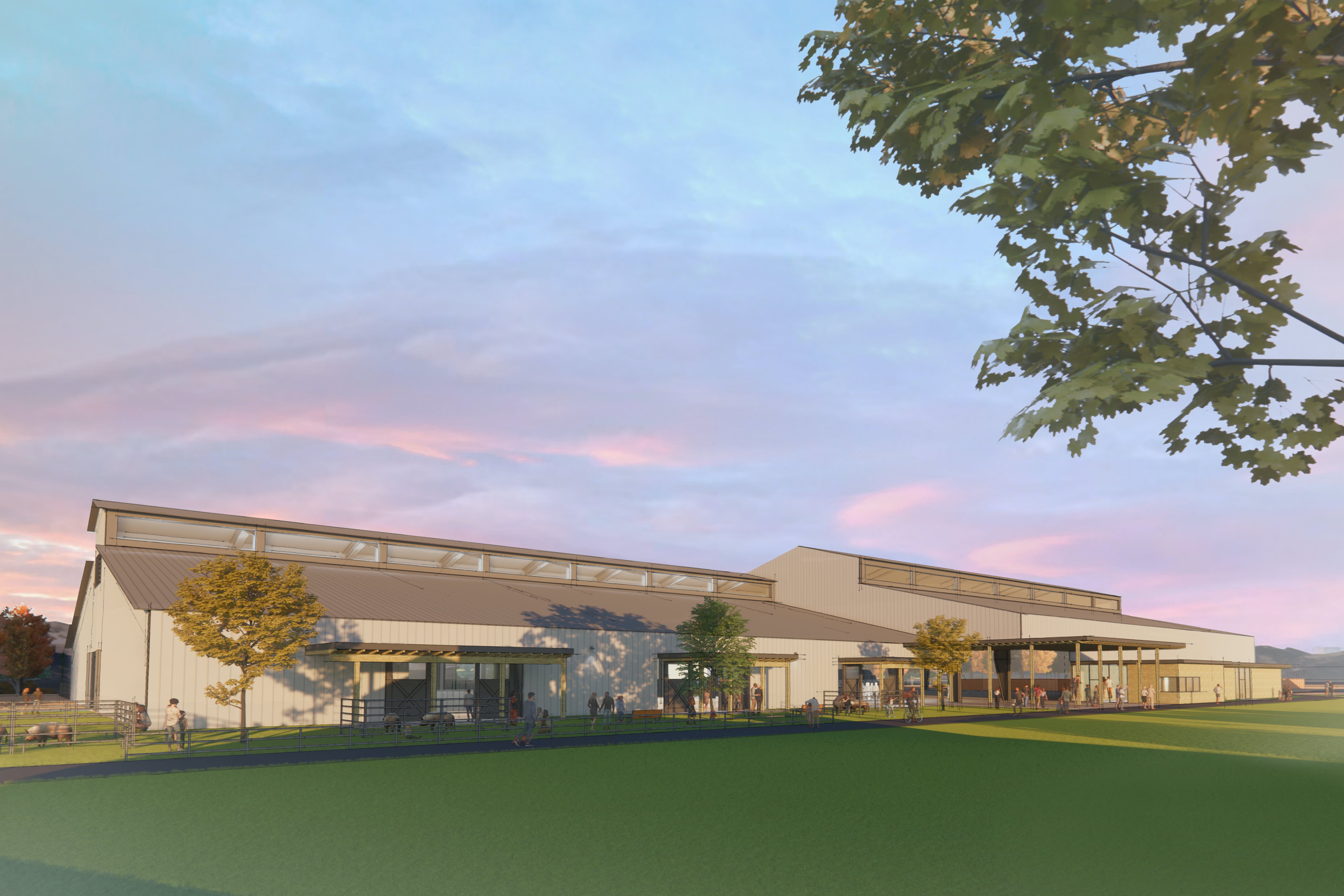
For over 100 years our Fairgrounds have provided community connection, agricultural learning, and recreational opportunities for all of Missoula County.
Our Fairgrounds have served our community well, but demand on the facilities and the needs of our community have increased as Missoula County grows. Glacier Ice Rink and 4-H & FFA programs are thriving, but the success of these programs has become restricted by limited space.
User groups and community stakeholders have been working for years to develop solutions to these issues so more Missoula County residents and out-of-area visitors can use our Fairgrounds. It is time now, as demand increases and desire to congregate in community spaces grows, to take the next step and put these plans into action. Committed user groups, community members and volunteers are eager to get to work and support these efforts.
Together, we can create more opportunities for families and future generations to access agricultural education programs like 4-H and FFA along with a new indoor agricultural and livestock arena. A third sheet of ice will let more kids and adults enjoy ice skating, hockey, and curling. Let’s promote our local food system while providing greater opportunities for education and fun. Whether it’s animals, science and tech learning, or meeting Missoula’s demand for ice sports, these improvements will connect kids and families through education and play.
For more information, or to find out how you can help, contact Campbell Barrett at cbarrett@montana.edu.

A Bean Story
Everyone has a “bean story” right? If you are from the South or Southwest -chances are, you do. It is seldom a story that defines you, but it is a story you find yourself telling often at someone’s kitchen table. Beans saved my life! Beans are versatile, inexpensive, flavorful, and healthy. Culture and food are inseparable. Food tells a story about you and where you came from. It is about tradition, and family, and religion-it is about culture.
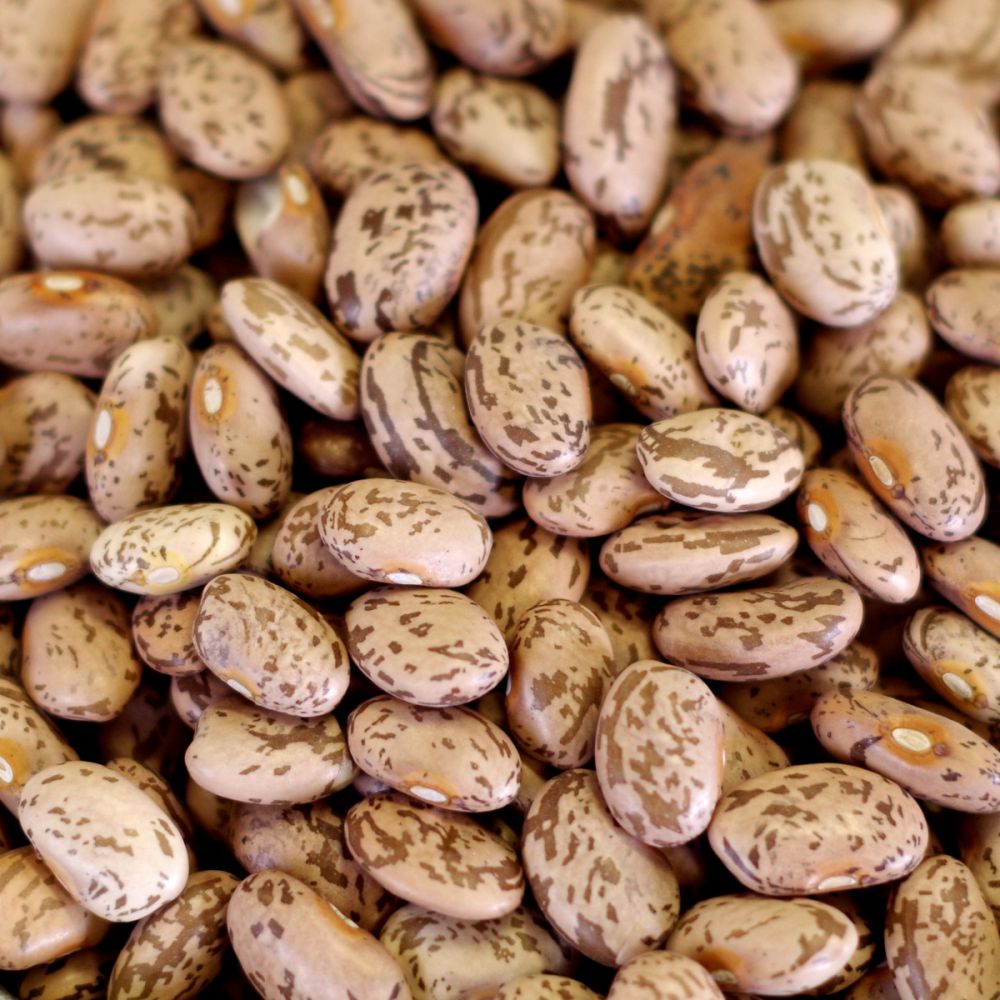
I grew up in one of the more desolate parts of Texas where the weather was as extreme and unpredictable as the first bite of a fresh jalapeno. I lived for the annual ten day summer vacation in southwestern Colorado! It was there that the 100 lb. bag of Dove Creek pinto beans was purchased and thrown into the back of the station wagon along with camping supplies and four kids. It would sustain us until the next camping trip rolled around. How can anyone consume a hundred pounds of beans in one year, you ask? We always managed to eat every bean. The empty burlap bag was then used for storing other things like rocks, tools, onions, or anything you wanted to hide from your siblings.
Ask any native Texan about pinto beans and they will suddenly become nostalgic and a little teary- eyed. They were the ultimate comfort food even though most of us thought that only “poor people” ate them. Truth be known- we were, and we did-we ate bowls of them with crumbled cornbread and onions thrown in. Occasionally, a little ham hock or side pork was added for extra flavor. Any leftover cornbread was thrown into a cold glass of milk the next morning and that was breakfast.
Today, dried beans can be cooked in much less time with the Insta-Pot or other pressure cooker.
Find more information here.
Now when I have time, and on slow rainy days, I like to cook beans the way my mom did. After the beans have been separated from any small rocks, cold water is added to the pot to cover the beans. They are then left to soak and soften for several hours. This makes for shorter cooking time. I drain the first soaking water and replace it with fresh cold water before I begin cooking them on the stove. Agreed, some vitamins may have been tossed down the drain with the water but not enough to make a whole lot of difference in the final product. It also helps alleviate the possible unwanted side effects of beans. A few cloves of garlic, a bay leaf, cumin (for the brave-a small chili), a little salt and pepper added later in the cooking process, and your bean destiny has begun. Low and slow works for barbeque and for a great pot of beans. One cup of dried beans yields 5-6 c. cooked beans and that means that there are endless opportunities for repurposing any leftovers. Versatile bean leftovers can also be used in making bean cakes, soups, pasta dishes, cakes, and salads. Think of all the breakfast tacos and burritos in your future! A half cup of pinto beans provides 32% of the daily recommended dietary fiber for adults and they are an excellent source of iron and folic acid which is essential in the production of red blood cells. Dried beans have a relatively long shelf life however, optimal quality is diminished after 12-18 months. Whether you purchase a bag of dried beans from the local grocery store shelf, from an online heirloom bean company (for bean snobs like me), or grow your own, you will be creating your own “Bean Story”. The possibilities are endless!
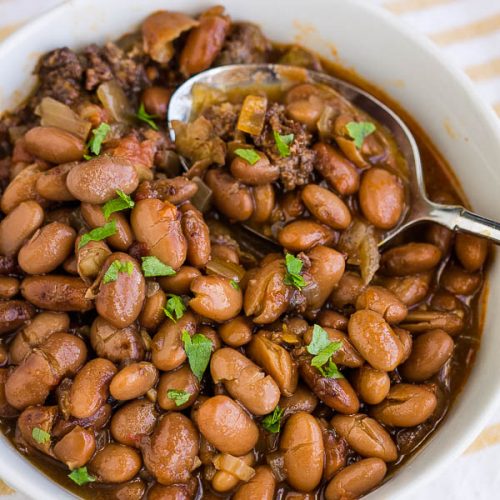
A recipe to try:
Search for -Peppery Pinto Beans with Sausage
Kelly Moore, Family and Consumer Sciences Extension Agent
Meet Molly Anton, Rocky Mountain Gardens Coordinator
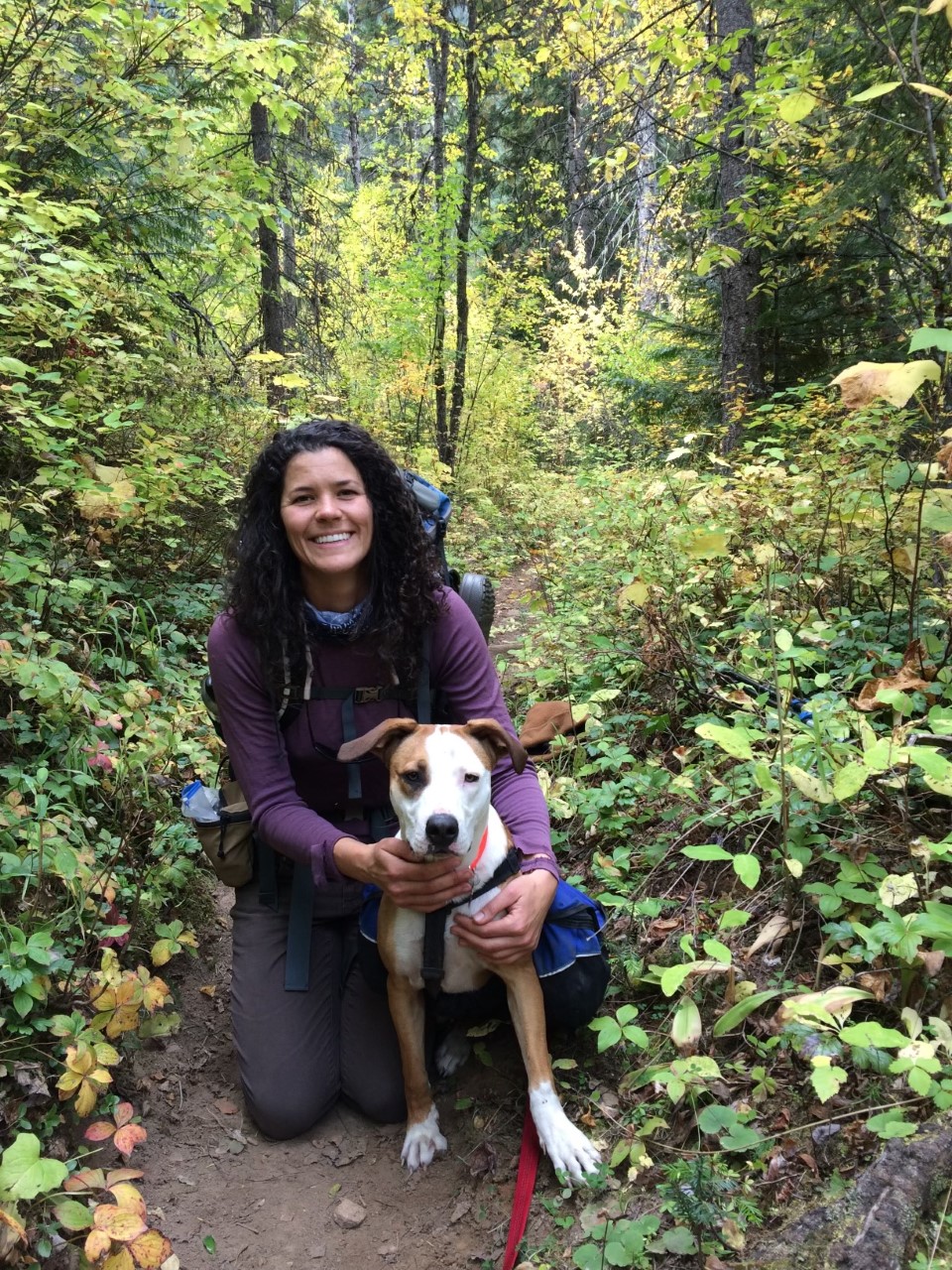
I transitioned to the role of Rocky Mountain Garden Coordinator after working for City of Missoula Conservation Lands managing their greenhouse and habitat restoration for 3 years. Originally from Arkansas, I have lived in many places and through my travels I’ve gathered a diverse background of growing experience working on farms and gardens, completing an apprenticeship in agroecology at UC Santa Cruz, working at a botanic garden and managing research and instructional greenhouses. It is a dream to be able to channel my passion for growing everything under the sun into my role coordinating the Rocky Mountain Gardens.
What part of your new position are you most excited about?
I am very excited to create an accessible space for our community to explore the ecology and culture of plants with a focus on practices that are most appropriate for our region and our changing world.
What do you enjoy most about living and working in Missoula/Western Montana?
I love that Missoula has access to expansive public lands which I love to enjoy by recreating and botanizing.
What is the nerdist natural history/conservation thing you know?
The oldest viable seed ever germinated is a 2,000 year old date palm seed that was excavated from an archaeological site in Israel. And they grew it to maturity!
What is the most interesting field experience you have had?
I was lucky enough to catch the 2016 superbloom in Death Valley National Park. It was so impressive to see carpets of color in such a harsh environment.
What color do you most identify with and why?
Green, for obvious reasons!
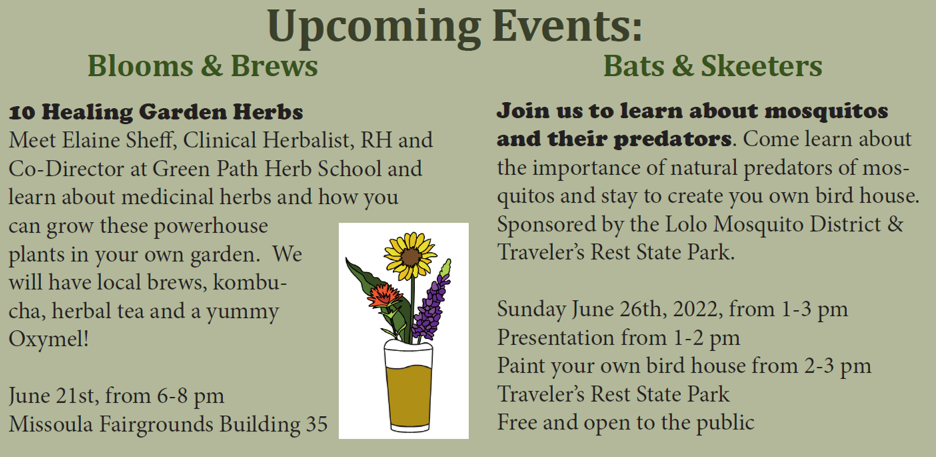
Invasive Brown Marmorated Stink Bug Found in Montana
The brown marmorated stink bug (BMSB) is an invasive insect from Asia that entered the US in the late 90s and has spread to 47 states and 4 Canadian provinces.
The BMSB was found in Billings, in January of 2021 and has recently been confirmed in Kalispell and Hamilton (March 2022). The stink bugs cause distortion, discoloration, and internal damage to fruits and vegetables with their piercing/sucking mouthparts. Similar to boxelder bugs, they are also nuisance invaders and frequently enter homes and structures in the fall.
As this is a new pest in our state, we do not know if the bug will be an insect of economic concern in Missoula County. In the mid-Atlantic states, it has been a devastating pest to tree fruits and other agricultural crops. In other states, such as Iowa, Missouri, and Florida, it has been primarily a nuisance invader and not of agricultural importance. Currently, in Montana, it has been a nuisance pest in several homes and is not yet known to cause economic damage to any crops.
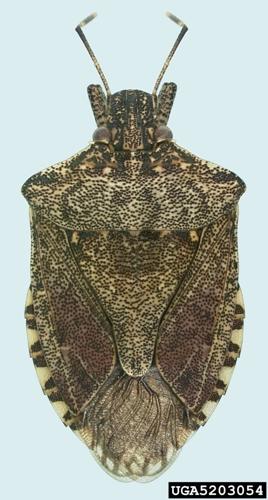
Brown marmorated bugs have an extensive host range with over 200 hosts. Some of the high-risk crops in Montana and other states include: apples, Asian and European pears, peaches, peppers, sweet corn, grapes, and tomatoes. The host plants that contain reproductive structures, such as fruiting bodies, buds, and pods, are more attractive to BMSB. Their preferred hosts can change frequently during the growing season.
We have several native stink bugs in Montana, and some are beneficial and feed on other pest insects. Several insects in Montana could be mistaken for BMSB. The brown marmorated stink bug can be distinguished from other stink bugs by looking at the following characteristics: antennae with white stripes, rounded “shoulders” on its thorax or second segment, and five white stripes along its last segment (abdomen). The stink bugs emerge as adults from overwintering sites in the spring and start to feed on the reproductive structures of several trees and shrubs. They mate within a couple of weeks and lay several eggs on the undersides of host leaves. There can be up to two generations per year with each female depositing up to 500 eggs.
A nationwide monitoring program for BMSB has been in effect for several years in areas where the pest is established and where it is yet to be found. In Montana, a series of pheromone traps for monitoring will be set up, which include nurseries (Montana Department of Agriculture), specialty crops (Western Agricultural Research Center (WARC), MSU Extension), and around urban homes and gardens (MSU Extension IPM Program) to assess BMSB impact and potential damage to crops and other host plants.
The BMSB was found and identified by a trained specialist at WARC this March. The Western Agricultural Research Center has been actively scouting for the pest for the last six years.
Several resources are available to learn more about the pest and are organized/housed by the “Stop BMSB Project”, stopbmsb.org. We expect BMSB to spread within the state. If you have a suspected bug, please send a picture or sample to the Missoula County Plant Clinic.
Clearwater Inspection Station is Up and Running for 2022!
The Clearwater Watercraft Inspection Station (WIS) staff hit the ground running and has yet to slow their pace. To date (May 31st) the station is the busiest in the state by a margin of 1,884 inspections. In total, the station accounts for 28% of the total inspections in the state, currently totaling in at 3,880 inspections and counting!
Additionally, a great success was reached when the staff intercepted not one but two mussel-fouled boats from the Great Lakes region of the US. This find very well could have prevented the spread of invasive zebra and quagga mussels into Flathead Lake and subsequently the various watersheds that eventually spill into the delicate Columbia River. This discovery was the first substantial infestation on a watercraft at the Clearwater WIS in several years.
Points of Origin for Clearwater Station Boats
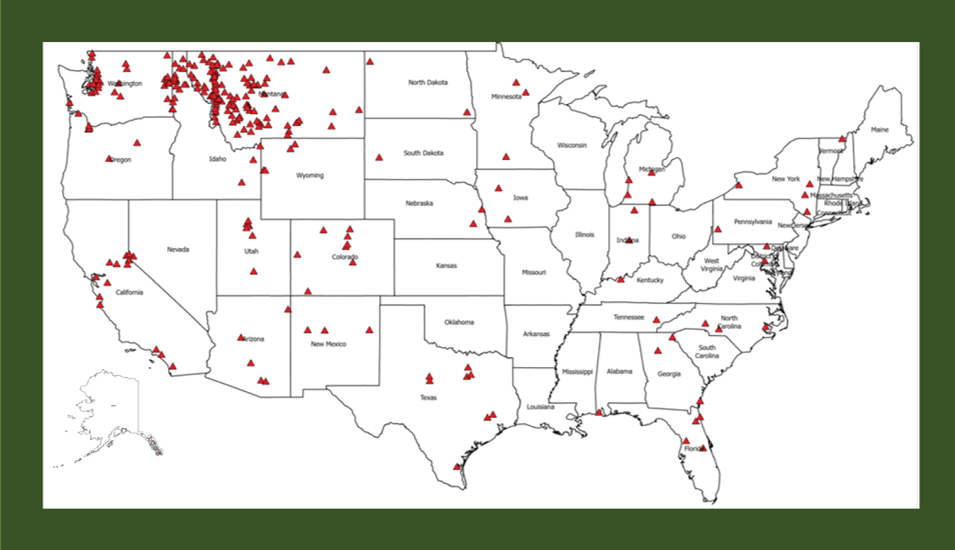
Meet Marirose Kuhlman, Habitat Coordinator
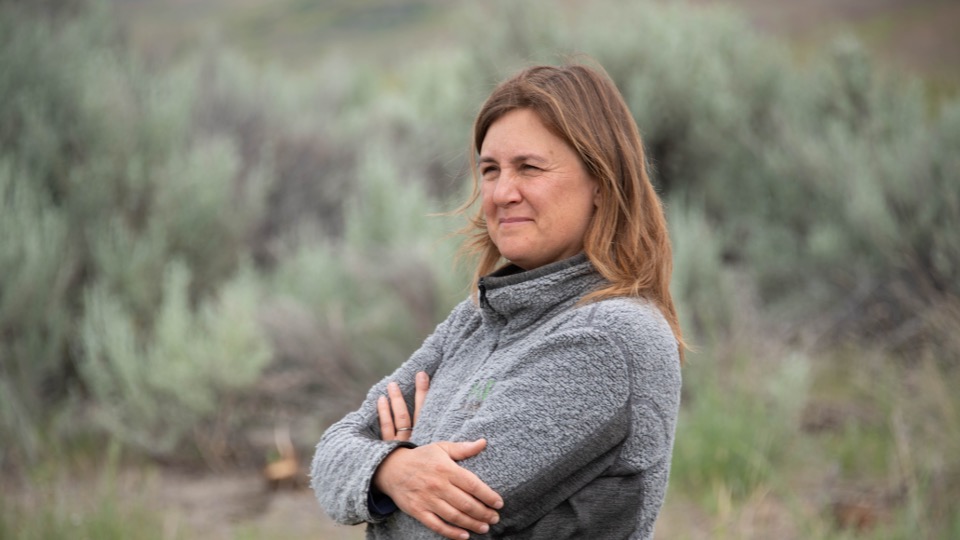
I have lived in Montana most of my life after my family moved to Great Falls when I was a kid. I have a bachelor’s degree in biology/botanical sciences from UM and have worked as a botanist most of my career – native plants/restoration was my first love. But after many years conducting a native bee monitoring project, I realized that pollinating insects (especially native bees) and plant-insect interactions were where the real excitement was, and now I’m just wrapping up a master’s degree in entomology through the University of Florida!
What part of your new position are you most excited about?
I’m looking forward to working with federal, state, and local partners to develop pollinator conservation plans for the county and making Missoula County Montana’s first “Bee County USA”. I’m also really excited to be a part of a dynamic, forward-thinking and all-around awesome crew at the weed district.
What do you enjoy most about living and working in Missoula/Western Montana?
I love Montana and it’s big landscapes! I have been in the Missoula area since 1993 and have appreciated the educational and cultural opportunities that Missoula provides while also having access to awesome public lands, including Wilderness areas.
What is the nerdiest natural history/conservation thing you know?
Blister beetles are “hypermetamorphic” and have a mobile, predatory, larval instar stage when they are known as “triungulins”. Blister beetles complete their life cycle by preying on the contents of native solitary bees’ nests, so the decline of native solitary bee species can lead to the decline of blister beetles. Another nerdy, but important, conservation thing I know is that Missoula County is home to *at least* 230 native bee species.
What is the most interesting field experience you have had?
Watching 3 fishers chase each other up and down and around some huge grand firs and spruce trees while I was working in the Great Bear Wilderness. That, and spending a summer and fall living and working at Big Prairie ranger station in the Bob Marshall Wilderness.
What color do you most identify with and why?
Not sure that I “identify” with a color, but I like blues and purples/violets. I don’t know WHY, I just always have!
